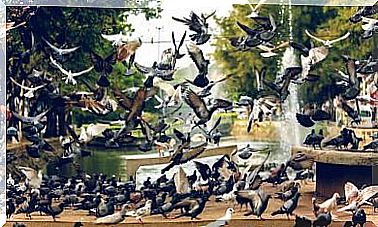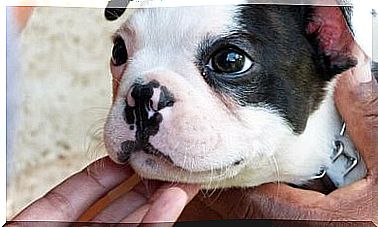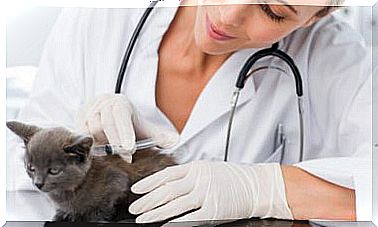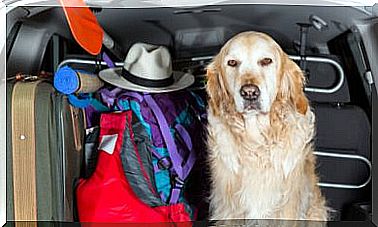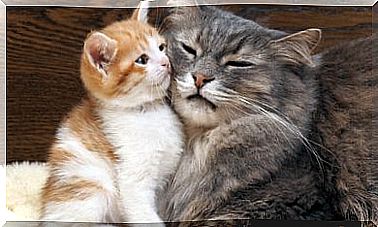Communication Between Ants

Ants are eusocial animals with a caste-based organization. This means that, within a colony, there are one or more queens, workers and warriors, each of which has a fundamental role within the anthill. For the balance to be maintained, communication between ants is essential.
Have you ever wondered how ants communicate or why they usually move around in a row? In this article we will tell you everything you need to know about communication between ants.
Chemical communication between ants
The main communication strategy between ants is the chemical pathway. Ants have a series of glands, through which they release different pheromones that communicate a great variety of states.
Pheromones are secreted through a wide range of sources, including: the Dufour gland, the poison gland, the anal gland, the gland in the feet, and the gland in the chest or abdomen. The reception of these substances is carried out through the antennas, which serve both to smell and to taste.
Communication between ants is very complex; They do not use a single pheromone to indicate something, but rather combine several. These pheromones serve, among other things, to show the foraging route. That is, they serve to communicate to the rest of the anthill where the food is and that the marked path serves as a reminder.
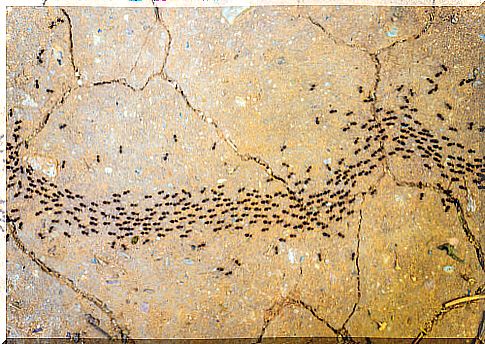
Thus, an ant does not need to store this information in its individual brain, as is the case with bees; instead, a physical network of memories is created that persists over time.
Within the castes, to determine what function an ant performs, pheromones are also used. In this way, an ant knows if it has to take care of the young, go out to forage or expand the anthill. In addition, within the group of foragers, each subgroup knows which foods to collect and which ones correspond to another subgroup.
On the other hand, ants know about the state of the queen by the pheromones that it releases. When a queen ant stops producing certain pheromones, the ants know that it is time to produce new queens.
Tactile communication between ants
In addition to chemical transmission, there is tactile communication between ants, either through ground vibrations or by direct contact. These direct contacts are usually ritualized movements, such as dancing, shaking, or showing. They work in a similar way to the dance that bees perform to indicate where the food is.
The most common form of physical contact is antenna touch. It is very common to see two ants crossing each other – while going in opposite directions – touching each other with their antennae. Currently, the reason for this behavior is unknown, but it seems undeniable that no information is being transmitted.

Auditory communication between ants
Ants do not have vocal cords, so the sounds they make do not come out of the throat. In addition, they are deaf, so they cannot hear the sounds that other ants make. So how do they communicate sonically?
These animals are capable of producing a sound called stridulation, thanks to an organ that they have in their mouths. This sound is detected by the human ear, but not by ants as such, but is transmitted through the substrate in the form of vibrations, which can be felt by ants.
The same goes for the sounds they make when they hit the ground with their abdomen. These travel in the form of vibration until they reach the rest of the companions.
Trophalaxis
The trophalaxis is the mechanism through which ants pass food to their companions and feed on each other. It can be done by mouth to mouth or from anus to mouth.
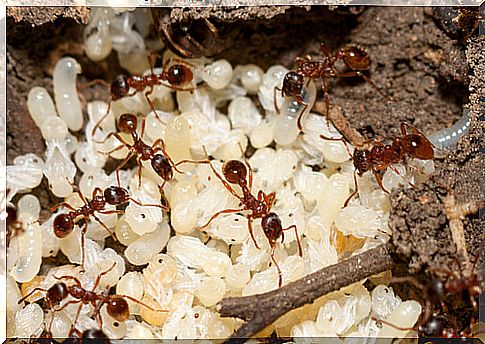
Although it may not seem like it, trophalaxis is also a form of communication between ants. The food is mixed with pheromones that transmit information to both adult individuals and larvae.
